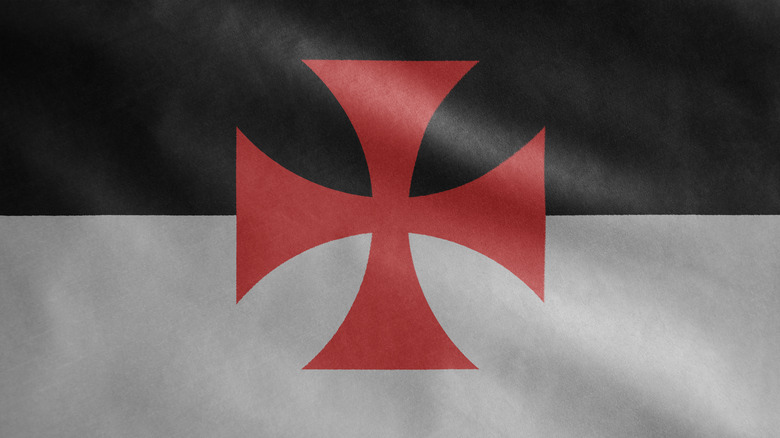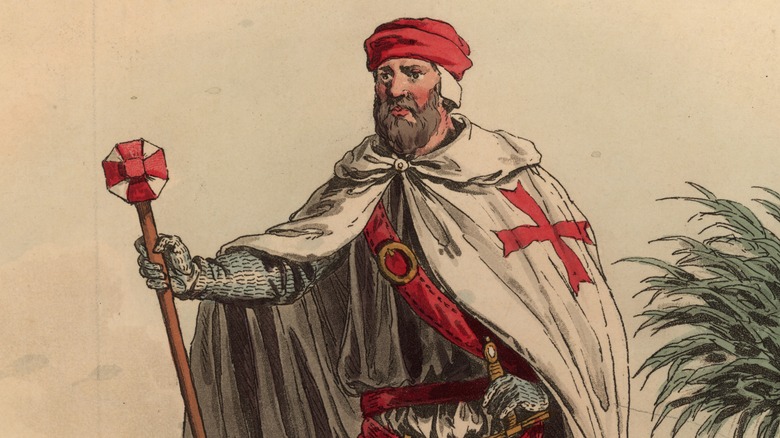This Was The Dress Code Of The Knights Templar
For 900 years, the Poor Fellow Soldiers of Christ and of the Temple of Solomon – the Knights Templar – have inspired the imagination, same as they did when they were a mere band of road-protecting sword wielders (think costume-wearing local superheroes here) in the days following the First Crusade, as National Geographic explains. When pilgrims from the West finally had a chance to make the bandit-plagued journey to Jerusalem, and local law enforcement wasn't up to snuff, in stepped the future, elite paramilitary fighters and pan-European banking service of the Templars. The Assassin's Creed games (you can play as a fictional Templar assassin), the Night Watch of the Wall in "Game of Thrones" (chaste, well-dressed fighters), the Jedi in "Star Wars": All of them and more, as GQ outlines, have romanticized and utilized the Templars as a, well, template.
The imagery, iconography, and mere concept of the Templars has stuck in our collective imagination, same as it inspired and attracted people nearly a millennium ago. Was it the brute appeal of howling dudes in metal suits bashing in the heads of baddies? Are they merely surrogates for our power fantasies? How about the ongoing Holy Grail-and-Freemason conspiracy myths?
Maybe it was the fashion. The Templars might have prohibited frilly things like shoelaces because they "belong to pagans," as History explains, but they sure knew how to brand.
A white mantle for purity, a red cross for blood
Dress code became as important to the Knights Templar as anything else they did. Manners (no kissing women, not even your mom, but a brother-on-brother "Kiss of Peace" was okay), strategy (never retreat, surrender, or charge), ideology (slaughter the "infidels" and such), and more: Templars were, as History tells us, all about that austere, rule-bound life.
As for the dress itself: It consisted of a white "mantle" (cloak) and one of history's most iconic logos, the St. George's cross, a red cross on a white background. At first, though, Templars just wore whatever they had. In 1128, as History says, Pope Honorius II officially declared them an "army of God," which is when they adopted their white mantle, likely because of their connections to the Cistercian order of monks, who wear white to symbolize purity. The mantle's red cross, which symbolizes the blood of martyrdom, worn on the left side, didn't come until Pope Eugenius III granted them the right to wear it in 1147 at the offset of the Second Crusade, per History Collection. This is when the Templars came into universal notoriety in both Europe and the Holy Land. Their uniforms, "dark caps," "dark tunics," and, yes, boffo beards, as Helen Nicholson wrote in her 2001 book "The Knights Templar: A New History," made them instantly recognizable.
Templar armor constitutes military technology that changed over time, and was only worn in combat. No knight wore 30-50 pounds of medieval armor just hanging around the house.

